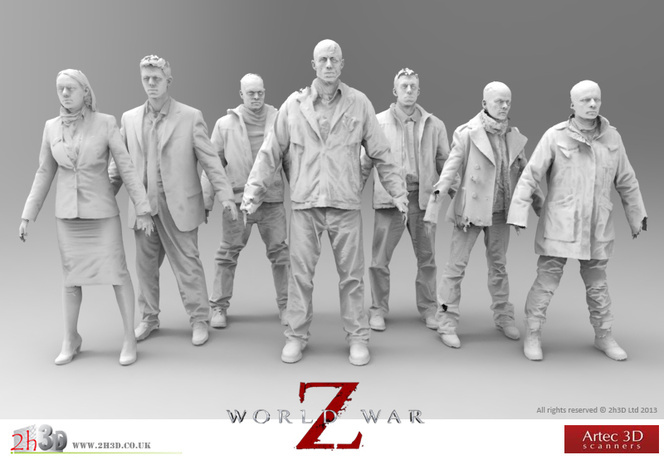Zombies and Prosthetic Limbs? The Many Uses of 3D Scanners

Ever wonder why the zombies in the film "World War Z" appear so lifelike? It's not just makeup — some of them were created with the aid of high-tech scanning technology.
The company Artec, based in Luxembourg, develops handheld 3D scanners that have been used for everything from Hollywood special effects to the development of prosthetic limbs.
The technology makes it possible to create a digital model of an object in the real world, which can then be manipulated with computer design software, said Leonid Volkov, chief business development officer at Artec Group. [Gallery: 3D Scans in Hollywood and Hospitals]
If, for instance, a company such as Lucas Films, Disney or Pixar (all Artec customers) is working on new 3D animated movie, and the producers want a glass of water to appear in the animation, "you have just two choices — scan it or draw it from scratch, which is much more expensive and time consuming," Volkov told Live Science.
The makers of "World War Z" used the scanners to digitize the zombie actors, weapons and baggage items in the plane crash scene. Filmmakers have used Artec's scanners in movies such as "The Chronicles of Narnia," "Skyfall," "Pirates of the Caribbean" and "Harry Potter" as well. TV shows such as "The Big Bang Theory" have also used Artec's devices to make scans of their characters.
The 3D scanners are designed for use on nonmoving subjects, such as inanimate objects or people who are standing still, Volkov said. And practically any scanned object can immediately be 3D printed, he added.
Outside of Hollywood, hospitals have used the scanning devices to create digital models of the body. For example, prosthetics companies can scan the stump of a person's missing limb and create a custom-made prosthetic that fits perfectly, Volkov said. If the other limb is intact, companies can also scan that limb to create a matching prosthetic limb, he said. German company Otto Bock, one of the world's largest prosthetics producers, is one of Artec's clients.
Sign up for the Live Science daily newsletter now
Get the world’s most fascinating discoveries delivered straight to your inbox.
Doctors also employ the scanners in plastic surgery, to scan patients' faces before they go under the knife. For people with severe burns, doctors can use the scanners to create a custom-made "burn mask," a plastic mask that protects the burned tissue from touching other surfaces, which can cause infection. Because the scanning process is contactless, it does not harm the injury, Volkov said. Doctors also use the scanners to develop custom orthotics for scoliosis, which is an abnormal curvature of the spine.
The devices work by rapidly flashing light in a pattern of horizontal and vertical lines, and recording how the pattern changes uses two cameras. One camera captures the geometry of the object, and the other captures the texture or color. The scanner then stitches the camera images together by matching the geometries and textures along their edges, producing a 360-degree model.
Artec's handheld portable 3D scanner costs about $20,000, Volkov said. The company also sells a multiple-scanner system called Shapify, which can create a "3D selfie"of the human body. That device retails for $180,000.
"Parents can scan their children and create figures to sent to Grandpa," Volkov said.
Follow Tanya Lewis on Twitter and Google+. Follow us @livescience, Facebook & Google+. Original article on Live Science.










